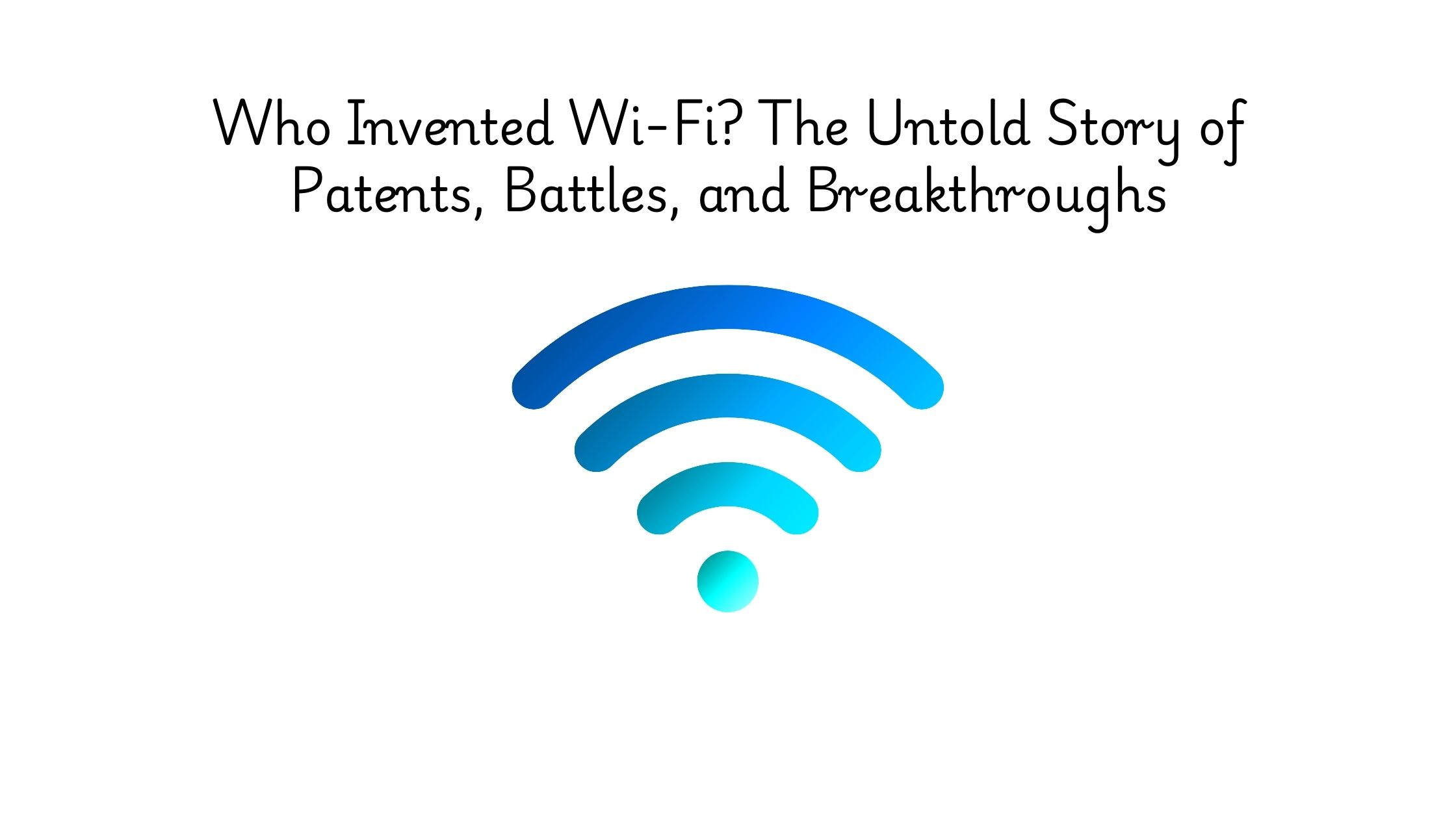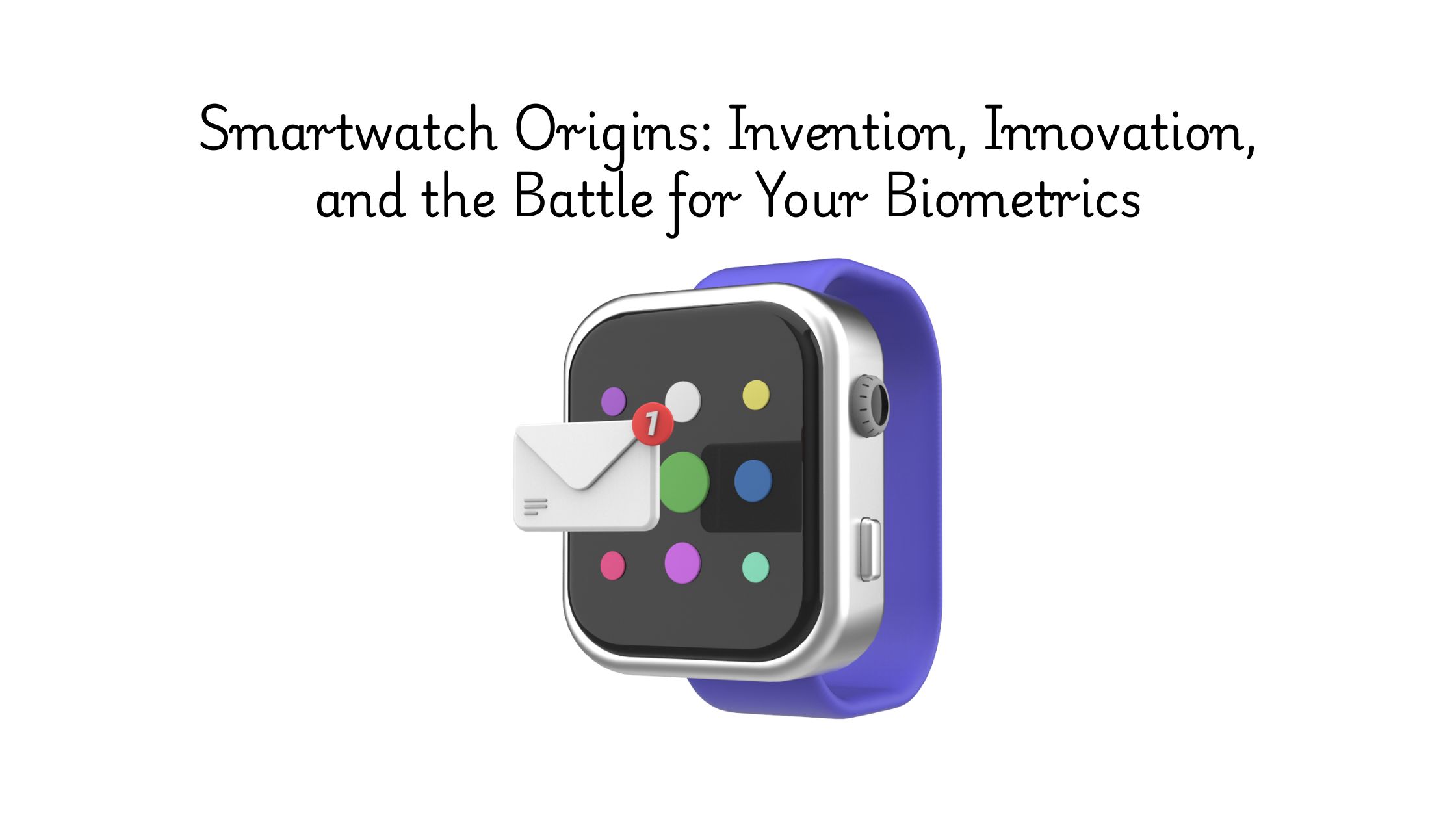The patent US9699444B2, owned by VDPP LLC, is currently under heavy litigation. It is part of a broader enforcement campaign by a non-practicing entity targeting multiple companies in the medical imaging space. The campaign covers over 16 active lawsuits, 88 closed cases, three reexaminations, and 10 patents in litigation. Amongst these patents is US9699444B2.
At its core, the ‘444B2 patent deals with advanced image processing for medical diagnostic equipment, specifically techniques that enhance the visualization of 3D volumetric data. In simple terms, it covers how raw scan data from machines like CT or MRI scanners is processed to create clearer, more useful images for doctors and specialists.
So why is it being targeted? The patent’s broad claims and wide application across modern imaging devices make it a high-impact asset, especially for companies developing or using advanced diagnostic tools. Its relevance to today’s imaging tech is precisely what draws attention and legal pushback.
Want to explore related patents to US9699444B2? Use the Google Patents Search (GPS) tool. Simply enter the patent number to uncover a web of documents with overlapping claims or innovations.
Let’s dive into what this patent actually covers and how it compares to related patents.
Understanding Patent US9699444B2
Patent US9699444B2, titled “Faster state transitioning for continuous adjustable 3Deeps filter spectacles using multi-layered variable tint materials,” centers around improving how 2D motion pictures are visually transformed into a 3D experience using specialized eyewear.
The invention focuses on faster transitions between lens states (light to dark) by using multiple layers of tint-controllable materials, allowing more precise control over light transmission. This ensures the lenses respond quickly to changes in lateral motion within a video, enhancing the 3D illusion in real time.
Its four key features are:
#1. Independently controlled lenses: Each lens (left and right) can shift states independently using electrochromic or optoelectronic materials.
#2. Multi-layer tint system: Multiple tint layers reduce transition lag and extend the cycle life of materials, solving speed and durability issues.
#3. Real-time motion syncing: The lenses dynamically adjust based on the lateral motion and brightness of the movie content for optimal depth perception.
#4. Bridge frame generation: A transitional visual “bridge” is introduced between image frames to enhance the illusion of continuous motion and depth.
The patent’s broad claims around frame blending, image transformation, and synchronized lens control make it especially potent in litigation involving video processing, image enhancement, or 3D visualization technologies. Its sweeping applicability across hardware and software platforms, especially in medical imaging and consumer electronics, makes it a prime target for legal challenges and reexamination requests.
Related Patent Reference for US9699444B2
#1. US20070133078A1
This patent, published on June 14, 2007, and assigned to Saint-Gobain Glass France, discloses a transparent window panel that uses an electrochromic surface element to control light transmission across a field of view. The system includes an electronic control unit that applies voltage to adjust the panel’s opacity.
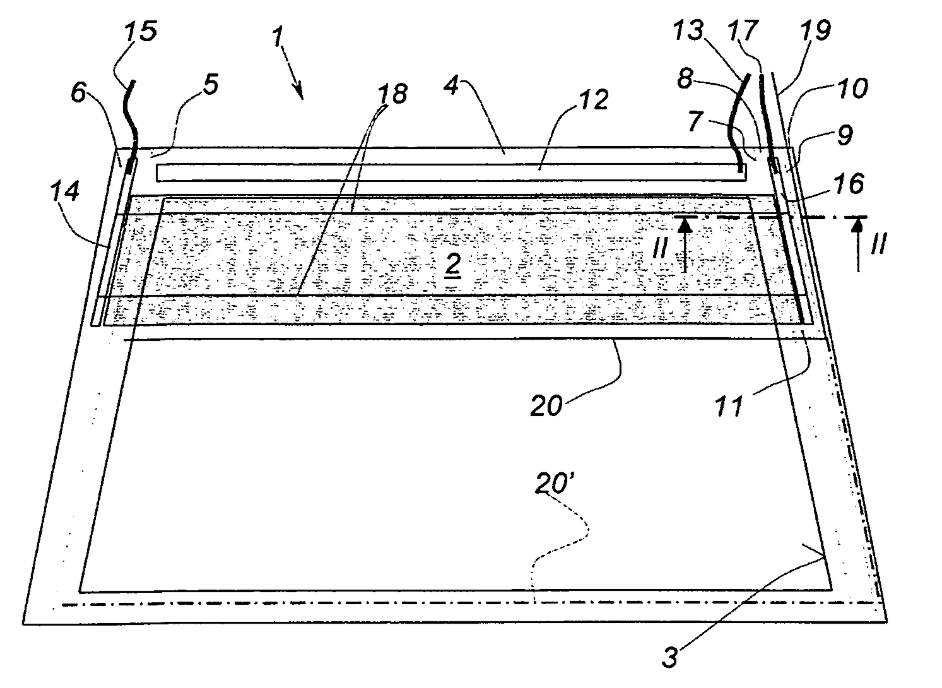
Source: US20070133078A1
Key Features of this Related Patent:
- Electrochromic-based opacity control – The invention uses voltage-responsive materials to dynamically adjust transparency, similar to US9699444B2’s multi-layered tint lenses.
- Electronic control interface – The system includes an interface to manage the tinting process, partially aligning with the concept of a “processor” controlling lens states.
- Real-time state change management – Although not video-based, the EC system adjusts optical states in response to control input, touching on aspects of transition speed and control logic found in US9699444B2.
Which features of US9699444B2 are disclosed by US20070133078A1?
| Key Feature of Claim 1 | Disclosure Status |
| An apparatus contains a processor | Partially Disclosed |
Key Excerpt from US20070133078A1:
“During the darkening process, the connection band 12 is used as positive electrode for applying a positive voltage to the coating… Its electrical potential is substantially the same over its entire length and can be used to uniformly darken the electrochromic layer.”
#2. CN87210593U
Published on March 23, 1988, this Chinese utility model by Zhang Hua introduces photo-sensed discolouration glasses using liquid crystal technology. The invention features a spectacle frame with embedded liquid chips and a central processor to detect light intensity and adjust lens tint accordingly.
Key Features of this Related Patent:
- Processor-embedded glasses – The invention includes a liquid chip system and central processor for adaptive lens response, aligning with the processor control in US9699444B2.
- Photo-responsive liquid crystal lenses – Similar to US9699444B2’s use of electrochromic materials, this patent controls lens tint based on environmental input.
- Real-time lens modulation – Although it doesn’t handle video frames, the system reacts dynamically to changing light conditions, akin to transition control in US9699444B2.
Which features of US9699444B2 are disclosed by CN87210593U?
| Key Feature of Claim 1 | Disclosure Status |
| An apparatus contains a processor. | Fully Disclosed |
Key Excerpt from CN87210593U:
“As 1 is a solar glass… comprising a spectacle frame and lenses… an eyeglass frame central processor is the liquid chip liquid crystal light polarization processor, and the spectral characteristics and brightness are regulated by light intensity received.”
#3. JPH0943563A
Published on February 14, 1997, this Japanese patent application from Canon Inc. discloses a video display device as eyeglass-type wearables. The system includes a liquid crystal display unit driven by a microcomputer, allowing video signals to be processed and presented directly on the user’s lenses.
Key Features of this Related Patent:
- Eyewear-integrated video display – The reference describes an eyeglass-type device that functions as a screen, paralleling the wearable component of US9699444B2.
- Microcomputer-driven display control – A microprocessor manages the image display, partially aligning with the processor requirement in US9699444B2.
- Video signal input and playback – The device plays video streams directly to the user’s line of sight, establishing a partial link to the image processing foundation of US9699444B2.
This is how feature mapping from the tool looks like:
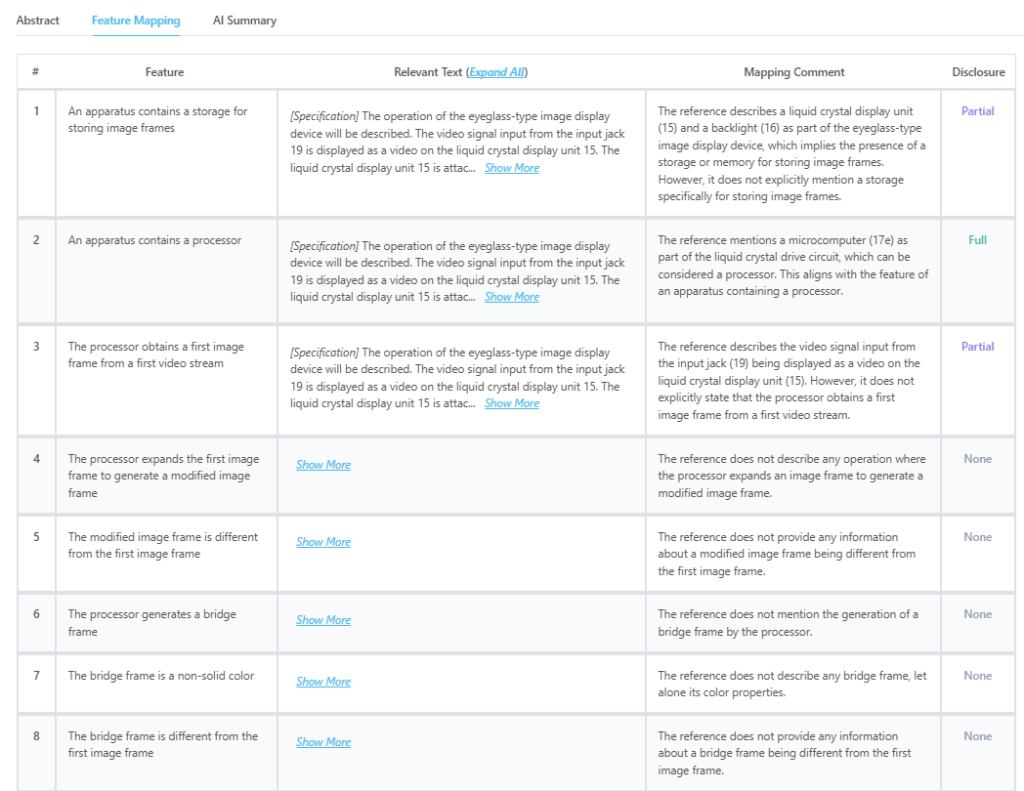
Source: GPS
Which features of US9699444B2 are disclosed by JPH0943563A?
| Key Feature of Claim 1 | Disclosure Status |
| An apparatus contains a storage for storing image frames | Partially Disclosed |
| An apparatus contains a processor | Partially Disclosed |
Key Excerpt from JPH0943563A:
“The video signal input from the input jack is displayed as a video on the liquid crystal display unit… The display unit is attached to the frame of the eyeglasses and operated by a microcomputer that processes the input signal for output.”
#4. US20100110523A1
Published on May 6, 2010, this application from Donnelly Corporation discloses an automotive rearview mirror assembly utilizing electrochromic technology. The invention describes how polychromic solid films can be controlled via an electronic system to alter reflectivity in response to environmental light.
Key Features of this Related Patent:
- Electrochromic visual modulation – The reference outlines the transformation of electrochromic films in response to electrical signals, similar to how US9699444B2 manages lens tint levels.
- Embedded control systems – The patent implies using processors for managing the electrochromic states, partially aligning with the processor feature in US9699444B2.
- Layer-based optical adjustment – Like US9699444B2, this patent also involves manipulating layered films to achieve visual change, although without dynamic video input.
Which features of US9699444B2 are disclosed by US20100110523A1?
| Key Feature of Claim 1 | Disclosure Status |
| An apparatus contains a storage for storing image frames. | Partially Disclosed |
| An apparatus contains a processor. | Partially Disclosed |
Key Excerpt from US20100110523A1:
“In accordance with the teaching of the present invention, polychromic solid films may be prepared by exposing an electrochromic monomer composition to electromagnetic radiation for a time sufficient to transform the electrochromic monomer composition into a solid film having electrochromic properties.”
#5. EP0470867A2
Published on February 12, 1992, and assigned to Donnelly Corporation, this European patent application discloses an electrochromic assembly for variable light transmission. The system relies on the electrical control of electrochromic materials layered within a housing, which adjusts transparency or reflectivity in response to voltage.
Key Features of this Related Patent:
- Electrochromic-based light control – The reference aligns with US9699444B2 in its approach to light modulation using electrochromic layers.
- Circuit-controlled optical transitions – The system utilizes electrical circuits to alter lens states, partially disclosing the processor concept.
- Layered material configuration – Like US9699444B2, the design is rooted in multiple optical layers working together under dynamic control.
Which features of US9699444B2 are disclosed by EP0470867A2?
| Key Feature of Claim 1 | Disclosure Status |
| An apparatus contains a processor. | Partially Disclosed |
Key Excerpt from EP0470867A2:
“This invention relates to electrochromic assemblies which include devices in which light transmittance varies when an electrical field is applied across an electrochromic material contained therein.”
Feature Comparison Table
| Key Feature of Claim 1 | US20070133078A1 | CN87210593U | JPH0943563A | US20100110523A1 | EP0470867A2 |
| An apparatus contains a storage for storing image frames. | Not Disclosed | Not Disclosed | Partially Disclosed | Partially Disclosed | Not Disclosed |
| An apparatus contains a processor. | Partially Disclosed | Fully Disclosed | Partially Disclosed | Partially Disclosed | Partially Disclosed |
| The processor obtains a first image frame from a first video stream. | Not Disclosed | Not Disclosed | Not Disclosed | Not Disclosed | Not Disclosed |
| The processor expands the first image frame to generate a modified image frame | Not Disclosed | Not Disclosed | Not Disclosed | Not Disclosed | Not Disclosed |
| The modified image frame is different from the first image frame. | Not Disclosed | Not Disclosed | Not Disclosed | Not Disclosed | Not Disclosed |
| The processor generates a bridge frame. | Not Disclosed | Not Disclosed | Not Disclosed | Not Disclosed | Not Disclosed |
| The bridge frame is a non-solid color. | Not Disclosed | Not Disclosed | Not Disclosed | Not Disclosed | Not Disclosed |
| The bridge frame is different from the first image frame. | Not Disclosed | Not Disclosed | Not Disclosed | Not Disclosed | Not Disclosed |
| The bridge frame is different from the modified image frame. | Not Disclosed | Not Disclosed | Not Disclosed | Not Disclosed | Not Disclosed |
| The processor blends the modified image frame with the bridge frame. | Not Disclosed | Not Disclosed | Not Disclosed | Not Disclosed | Not Disclosed |
| An apparatus contains storage for image frames. | Not Disclosed | Not Disclosed | Not Disclosed | Not Disclosed | Not Disclosed |
How to Find Related Patents Using Global Patent Search
Finding related patents is essential when evaluating the strength, novelty, or potential vulnerabilities of an invention. The Global Patent Search tool simplifies this process through a structured, data-driven workflow:
Search by patent number or description – Begin your analysis by entering the target patent number (e.g., US9699444B2) or relevant technical keywords into GPS.
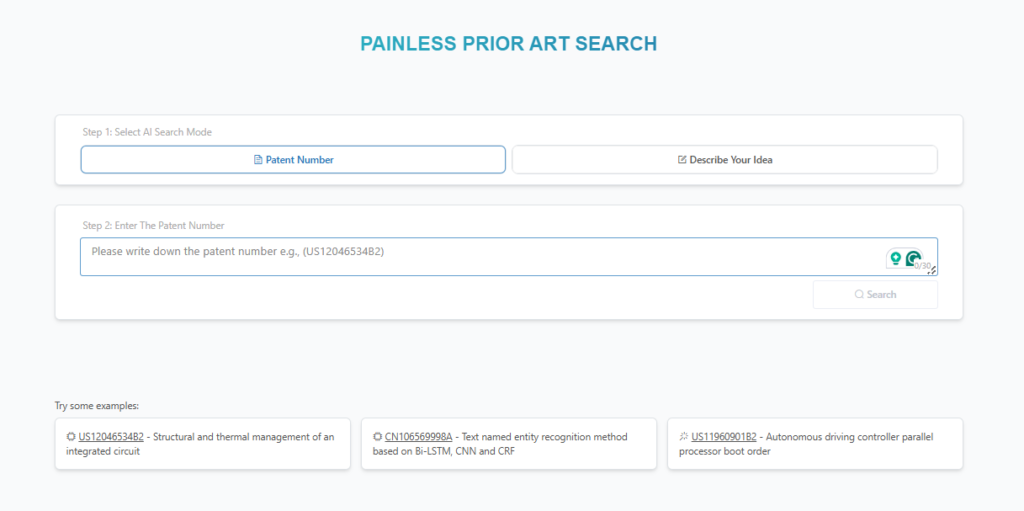
Source: GPS
Use feature mapping for comparison – Instantly see how key features of the subject patent compare with existing patents, using GPS’s automatic mapping engine.
Review matching results – GPS presents a ranked list of related patents based on structural, functional, and claim-level similarities.
Analyze detailed disclosures – For each match, GPS highlights whether a feature is fully, partially, or not disclosed, helping you assess the degree of overlap.
Build strong legal strategies – With side-by-side comparisons and mapped features, legal teams can make informed decisions on patent validity or litigation posture.
GPS turns complex patent analysis into an efficient and reliable process, making it easier than ever to identify critical related patents.
Take the Guesswork Out of Related Patent Research
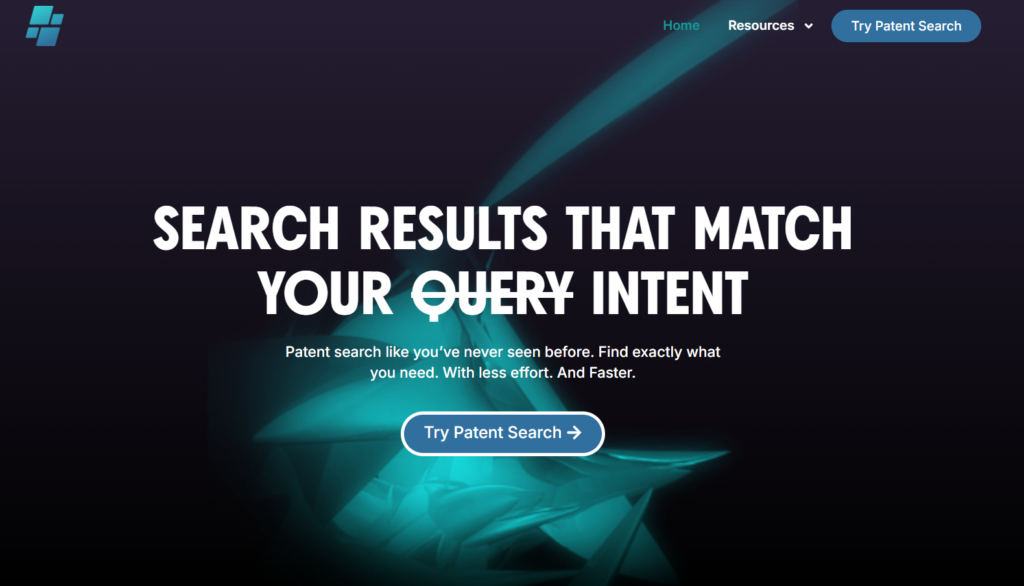
Patent disputes are intricate, but identifying related patents doesn’t have to be.
With the Global Patent Search tool, you gain access to:
- Instant results – Skip the manual digging. GPS delivers high-relevance matches in seconds.
- Accurate feature mapping – Visualize exactly how each reference compares to your patent’s claims.
- Data-driven insights – Build stronger arguments and litigation strategies with evidence-backed comparisons.
Whether defending a patent, challenging one, or simply evaluating innovation, Global Patent Search gives you the clarity and confidence you need. Start your search today and let data guide your next move.
Disclaimer: The information provided in this article is for informational purposes only and should not be considered legal advice. The related patent references mentioned are preliminary results from the Global Patent Search tool and do not guarantee legal significance. For a comprehensive related patent analysis, we recommend conducting a detailed search using GPS or consulting a patent attorney.


